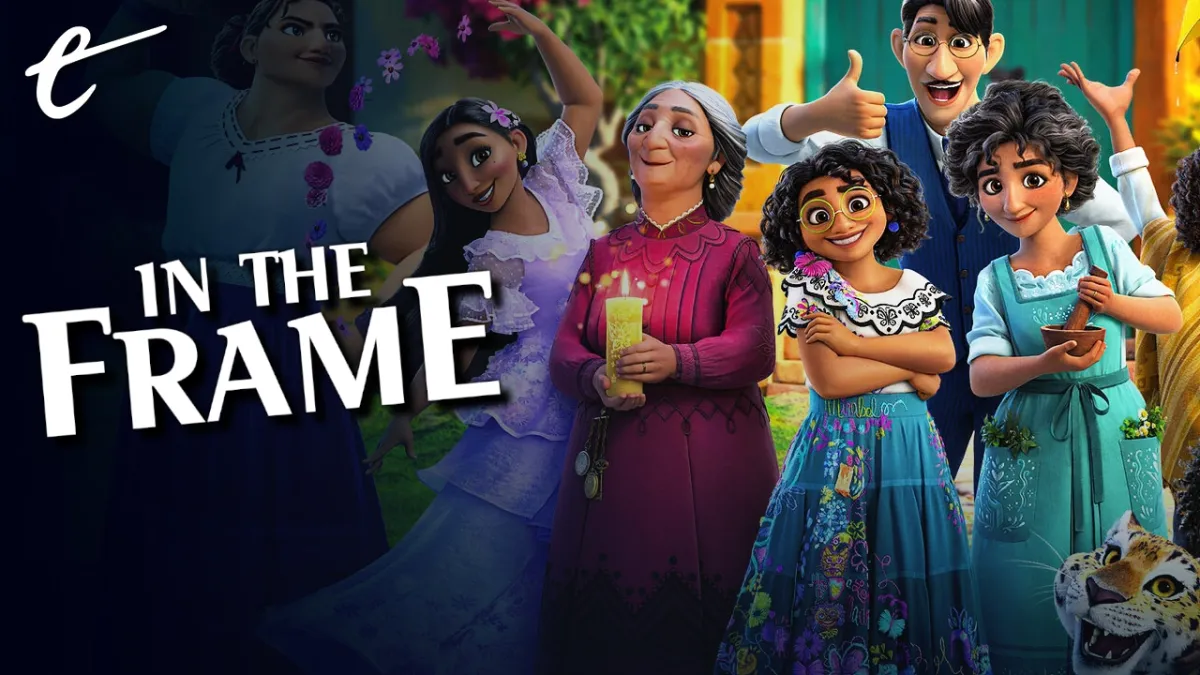Over the past decade, Disney’s animated “princess” movies have quietly become the studio’s most consistent output, even ahead of brands like the Marvel Cinematic Universe, Star Wars, and Pixar. In the decade and change since the release of Tangled, the animated Disney “princess” movies have been quietly revolutionary as they both deconstruct and reconstruct the familiar archetype for a new generation.
To a certain audience, the Disney brand is inseparable from the animated princess films. This makes sense, given how closely the studio’s history is tied to the genre. The studio’s first theatrical animated film was Snow White and the Seven Dwarfs. The movie was a genuine cultural phenomenon, earning several multiples of the year’s next-highest-grossing movie and even picking up a delightfully designed honorary Academy Award.
This perhaps explains the outsized influence of the princess genre on the Disney brand. After all, in the first few decades of the studio’s existence, the only animated films to meet the strict definition of the genre were Cinderella in 1950 and Sleeping Beauty in 1959. If one expands the criteria to include movies with a female lead who is not royalty, it’s possible to also count Alice in Wonderland in 1951. These films were far outnumbered by other animated genres, like “talking animal” films.
Perhaps nostalgia for the trend is stronger than the trend itself. More of these kinds of movies were produced during the decade-long “Disney Renaissance” than there had been in the half century before. The most conventional examples include The Little Mermaid in 1989, Beauty and the Beast in 1991, and Pocahontas in 1995. If one discounts literal royalty as a requirement, Mulan counts from 1998. If one considers Jasmine (Linda Larkin) to be a co-lead, then Aladdin from 1992 also counts.

The past 15 years have seen an explosion in content related to the brand. There have been live-action adaptations that prioritize these stories: Tim Burton’s Alice in Wonderland in 2010, Kenneth Branagh’s Cinderella in 2015, Bill Condon’s Beauty and the Beast in 2017, Guy Ritchie’s Aladdin in 2019, and Niki Caro’s Mulan in 2020. It’s also possible to count the Maleficent movies as extensions of Sleeping Beauty. Remakes of The Little Mermaid and Snow White loom large on the horizon.
However, the company’s animated output has also leaned into the genre. Following experiments with Enchanted in 2007 and The Princess and the Frog in 2009, the company has brought the genre into the age of computer animation with Tangled in 2010, Frozen in 2013, Moana in 2016, Frozen II in 2019, and the double whammy of both Raya and the Last Dragon and Encanto in 2021. That’s as impressive and consistent a lineup as that of any of Disney’s other major cinematic franchises.
As one might expect, given all of this, the studio has a complicated relationship with these kinds of films. When the genre was revived at the turn of the 1990s, it overlapped with third-wave feminism. Naturally, there were passionate debates about how to update the young feminine archetype for a new decade. It seemed unimaginable that the studio’s female leads could be as passive as the protagonists from Cinderella or Sleeping Beauty, waiting for a handsome prince to save them.
“By the time I rolled around, I’d been through the women’s movement in the ‘60s and ‘70s and I definitely couldn’t buy that this smart, attractive young girl, Belle, would be sitting around and waiting for her prince to come,” recalls Beauty and the Beast co-writer Linda Woolverton. Woolverton has been frank about the challenges she faced, with other writers literally consigning Belle (Paige O’Hara) to the kitchen. Still, Woolverton “muscled through” and reshaped the archetype.

Director John Musker credits the writers for pushing for “Jasmine’s independence” in Aladdin. Producer Jim Pentecost described the title character of Pocahontas as “the strongest heroine we’ve ever had in a Disney film,” and it’s notable that the film ends with Pocahontas (Irene Bedard) deciding not to leave her people to live happily ever after with John Smith (Mel Gibson). Mulan played with gender and sexuality, in a manner that is arguably bolder than in the live-action remake.
While the portrayal of these female leads became more nuanced and multifaceted over the decade, the studio grew uncomfortable with the extent to which its brand was tied to female characters that were largely packaged and sold to young girls. Towards the turn of the millennium, Disney began to steer its animated films towards a more masculine audience, reflected in the more playful irreverence of films like Hercules and The Emperor’s New Groove and the adventure of Tarzan.
The turn of the millennium found Disney’s animation department working through a crisis of identity. In 2001, Atlantis: The Lost Empire marked an attempt on the part of the company to appeal to “older children.” The following year’s Treasure Planet was part of that same strategy, to challenge animated movies like Shrek and Toy Story that had “clicked with teenage males.” Even female-led projects like Lilo & Stitch were branded with attitude, with “inter-Stitch-als” mocking earlier films.
There were waves of articles from news outlets like The New York Times and ABC questioning the enduring relevance of the Disney princess archetype. By 2004, the company was publicly acknowledging an attempt to shift its focus towards young male consumers, and – to quote then-Disney president Bob Iger – “Boys don’t seem that enamored of princes.” In 2008, Disney Consumer Products spokesman Gary Foster was “focused on broadening Disney’s appeal to the older boy.”

This shift was reflected in the company’s output. In 2009, the company rebranded its channel Toon Disney as Disney XD in an effort to appeal to boys. Emboldened by the success of the Pirates of the Caribbean franchise, the studio began pushing for family-friendly live-action adventure movies that could appeal to teenage boys, like Tron: Legacy, John Carter, and The Lone Ranger. Most strikingly, the studio retitled its long-gestating Rapunzel project as Tangled to appeal to boys.
It should be noted that none of these efforts, sans Tangled, worked. Movies like The Emperor’s New Groove and Atlantis: The Lost Empire suggested the future of Disney animation was less than certain. The underperformance of Treasure Planet contributed to a drop in the company’s share price. The rebranding of Disney XD actually attracted more girls to the channel. Tron: Legacy underperformed, but both John Carter and The Lone Ranger outright bombed.
Disney effectively outsourced the problem. The company’s purchase of both Marvel Studios and Lucasfilm gave the company access to the young male audience that it craved. This seemed to relieve some of the anxiety around the company’s association with “princess” movies, removing the existential crisis around the brand. These animated movies were no longer the biggest thing associated with the company. They were just one facet of an empire with multiple equally prominent brands.
The really interesting thing about the animated princess movies starting with Tangled is how carefully and how cleverly they play with the genre. They deconstruct and reconstruct many of the underlying assumptions of these kinds of films, effectively redesigning the narrative engine that drives one of the most archetypal story templates in children’s entertainment. The movies are reflective, thoughtful, and well-observed. They’re also fun and joyous.

Frozen plays with the expectation of romance in the classic princess story, casting its “Prince Charming” archetype Hans (Santino Fontana) as the villain and allowing Elsa (Idina Menzel) to remain single at the end. Moana is built around the reveal that the movie’s antagonist, Te Kā, is not a villain. Indeed, the movie’s big reveal is that the charismatic mythic figure Maui (Dwayne Johnson) isn’t a hero at all, his selfishness and arrogance effectively cursing the world.
Frozen II plays like a companion piece to the sly and subversive Thor: Ragnarok, grappling with the legacy of imperialism and colonial exploitation. It’s certainly a timely theme; Frozen II argues that even magic kingdoms have to reckon with the gulf between real and imaginary history. Raya and the Last Dragon grappled with serious questions about living in an increasingly fractured world and the challenges facing a country divided as it tries to heal and reconcile.
Encanto continues this trend. It’s a movie that plays with many of the tropes and conventions of the standard “princess” movie. Many of these movies find the hero having to leave home and embark on an epic adventure; Snow White (Adriana Caselotti) ends up moving in with seven strangers, Cinderella (Ilene Woods) has to go to the ball, and even Sleeping Beauty (Mary Costa) winds up living in the woods with her fairy godmothers.
In contrast, Encanto suggests that Mirabel Madrigal’s (Stephanie Beatriz) journey takes place at home. The film unfolds within walking distance of the family home. Mirabel’s journey isn’t entirely about self-actualization. Instead, her arc is about empathy. To save the magic that holds her family together, Mirabel needs to learn empathy and to understand others. She eventually sees beneath the exteriors of her sisters Luisa (Jessica Darrow) and Isabela (Diane Guerrero).

Like both Moana and Raya and the Last Dragon before it, Encanto also rejects the idea of an easy villain. At various points, the film hints that the crisis might be the result of Mirabel’s weird uncle Bruno (John Leguizamo) or her controlling Abuela (María Cecilia Botero). Instead, the crisis is caused by division within the family and can only be resolved through reconciliation and understanding. Abuela learns to understand her children and grandchildren, just like Mirabel.
The characterization of Abuela plays as a sly subversion of the familiar “wicked matriarch” figure, reflected in the Evil Queen (Lucille La Verne) from Snow White and the Seven Dwarfs, Lady Tremaine (Eleanor Audley) from Cinderella, Maleficent (Audley) from Sleeping Beauty, and even more recent examples like Ursula (Pat Carroll) from The Little Mermaid and Mother Gothel (Donna Murphy) from Tangled. Abuela is allowed to be an actual person, with motivations and nuance.
What’s really remarkable about all these movies is the way that they modernize the template while still remaining true to the basic underlying narrative template. They are all recognizable as classic Disney animated films, even as they reinvent and reconfigure so much of the underlying logic to bring the archetype into the 21st century. It’s a striking and enduring accomplishment. Like the other recent entries in the animated canon, Encanto proves a familiar template can still cast a spell.






Published: Nov 29, 2021 11:00 am